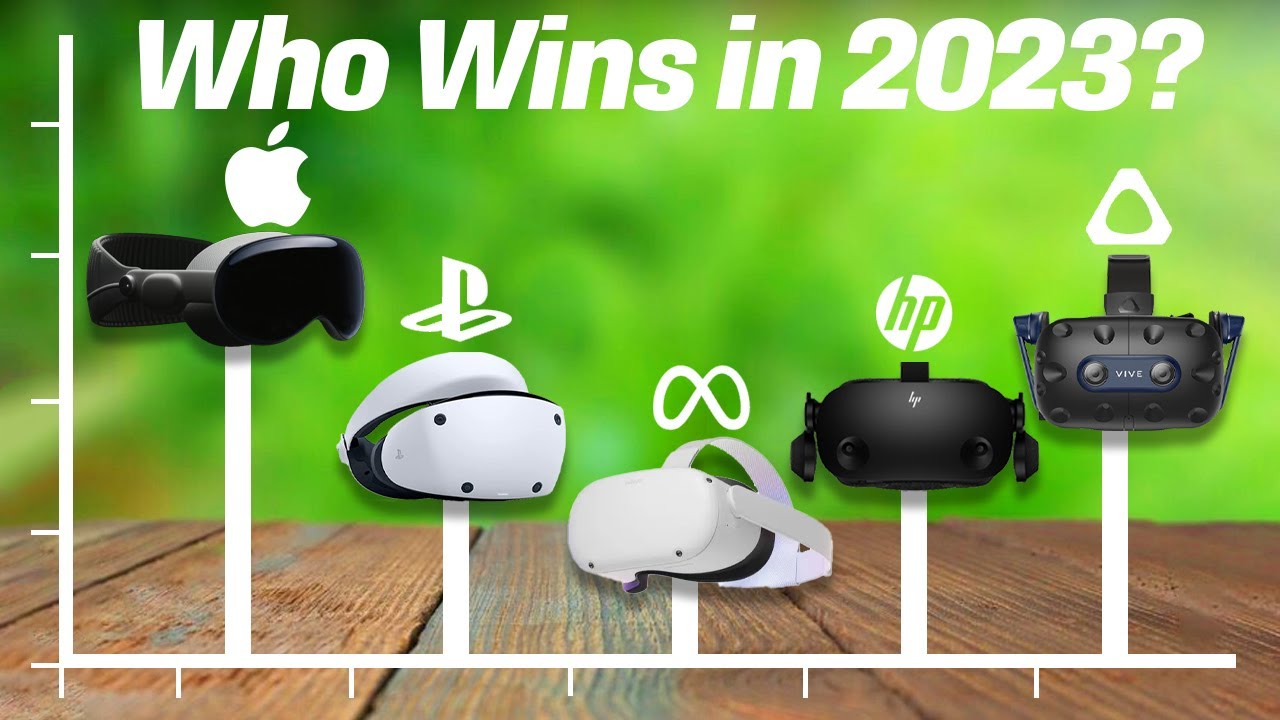
High-End VR Battle: Valve Index vs. HTC Vive Pro 2
Introduction
Virtual Reality (VR) has come a long way in recent years, and high-end VR headsets have become more accessible to consumers. Two of the most popular options in the market are the Valve Index and the HTC Vive Pro 2. Both headsets offer impressive features and capabilities, but which one is the best choice for you? In this article, we will compare the Valve Index and the HTC Vive Pro 2 to help you make an informed decision.
Design and Comfort
When it comes to design, both the Valve Index and the HTC Vive Pro 2 are sleek and modern-looking headsets. The Valve Index has a unique design with adjustable head straps and a comfortable fit. It also features built-in headphones that provide excellent audio quality. On the other hand, the HTC Vive Pro 2 has a more traditional design with adjustable head straps and a comfortable foam padding. It also offers a wide field of view, which enhances the immersive experience.
In terms of comfort, both headsets are relatively comfortable to wear for extended periods. However, some users have reported that the Valve Index can feel a bit heavy on the front of the face, which may cause discomfort over time. The HTC Vive Pro 2, on the other hand, distributes its weight more evenly, resulting in a more comfortable fit.
Display and Visual Quality
The display and visual quality are crucial factors to consider when choosing a high-end VR headset. The Valve Index features dual LCD panels with a combined resolution of 2880 x 1600 pixels. It also offers a refresh rate of up to 144Hz, which provides smooth and fluid visuals. The HTC Vive Pro 2, on the other hand, boasts dual RGB AMOLED panels with a combined resolution of 4896 x 2448 pixels. It also offers a refresh rate of up to 120Hz, which delivers stunning visuals with vibrant colors and deep blacks.
Both headsets offer impressive visual quality, but the HTC Vive Pro 2’s higher resolution and AMOLED panels give it a slight edge in terms of overall visual fidelity. However, the Valve Index’s higher refresh rate provides a smoother and more immersive experience, especially for fast-paced games.
Tracking and Controllers
Accurate tracking and responsive controllers are essential for a seamless VR experience. The Valve Index utilizes SteamVR 2.0 tracking technology, which provides precise and reliable tracking. It comes with two base stations that need to be mounted in the play area for optimal tracking coverage. The Valve Index controllers, known as “Knuckles,” feature finger tracking and capacitive sensors, allowing for more natural and intuitive interactions in VR.
The HTC Vive Pro 2 also utilizes SteamVR 2.0 tracking technology, ensuring accurate tracking. It comes with two base stations for tracking coverage. The Vive Pro 2 controllers are similar to the original Vive controllers, offering precise tracking and a comfortable grip.
Both headsets offer excellent tracking capabilities, but the Valve Index’s Knuckles controllers provide a more immersive and intuitive experience, thanks to their finger tracking capabilities.
Software and Compatibility
When it comes to software and compatibility, both the Valve Index and the HTC Vive Pro 2 are compatible with SteamVR, which offers a vast library of VR games and experiences. They are also compatible with other VR platforms, such as Oculus Rift, through third-party software.
The Valve Index benefits from Valve’s extensive experience in the gaming industry, offering seamless integration with SteamVR and excellent support for VR games. The HTC Vive Pro 2, on the other hand, benefits from HTC’s partnership with Valve, ensuring a smooth and reliable VR experience.
Pros and Cons
Valve Index:
– Pros:
– Adjustable head straps and comfortable fit
– Built-in high-quality headphones
– Dual LCD panels with a high refresh rate for smooth visuals
– Knuckles controllers with finger tracking for immersive interactions
– Seamless integration with SteamVR and extensive game library
– Cons:
– Can feel heavy on the front of the face
– Slightly lower resolution compared to the HTC Vive Pro 2
HTC Vive Pro 2:
– Pros:
– Adjustable head straps and comfortable foam padding
– Dual RGB AMOLED panels with a high resolution for stunning visuals
– Wide field of view for enhanced immersion
– Precise tracking with SteamVR 2.0 technology
– Partnership with Valve ensures a reliable VR experience
– Cons:
– Slightly lower refresh rate compared to the Valve Index
– Controllers lack finger tracking capabilities
In conclusion, both the Valve Index and the HTC Vive Pro 2 are excellent high-end VR headsets with their own strengths and weaknesses. The Valve Index offers a comfortable fit, impressive visual quality, and intuitive Knuckles controllers. On the other hand, the HTC Vive Pro 2 boasts a higher resolution display, wider field of view, and reliable tracking. Ultimately, your choice will depend on your specific preferences and priorities in terms of design, comfort, display quality, tracking, and software compatibility.






